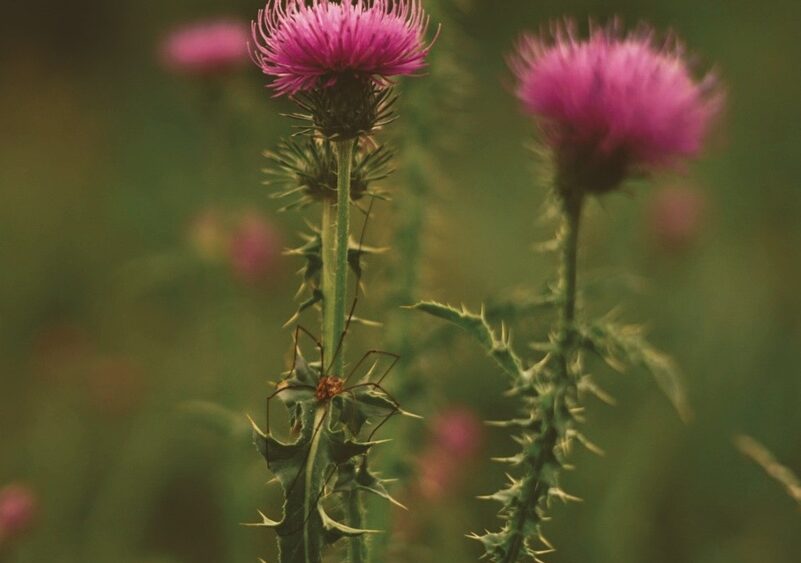As a registered Botanical Garden, Innisfree is bound to a code of conduct that includes an agreement not to allow or encourage invasive plants. This entails a great deal of work for our garden crew who are regularly sweating hard to pull out thistles, brambles, and Scotch broom, the main ‘problem plants’ we encounter daily. We can easily spend 15 – 20 hours per month just doing invasives control, but if we didn’t we would lose the farm!
These are not plants of interest for medicine, not that they don’t have possible benefits such as astringent action from bramble, and delicious edible fruit if you can get past the thorns, but not enough to make them a plant for harvesting.
In fairness, all of these could be considered as succession plants that colonize the edges of mowed areas and move towards the centre, filling in and growing up as they go. This is how open land reverts back to scrub, than shrub, then primary forest, and finally mature forest with understory. This is a natural process and, in fact, forest is the default earth covering that happens when nature is left to get on with it. For the Botanic Garden, however, we love to have the open lawns and mowed areas to allow long views and open vistas, set about with feature trees and sculpture pieces. So, all that to say, we are alert to invasive species and do not want to encourage them to our garden.
What a surprise, then, to get an email from our specialty herb plant supplier to let us know the lovely and thriving cinnamon yam plants we got from them, that are covering our front fence very nicely, is becoming very invasive in parts of Canada and they are required to contact old customers and ask us to send the plant and all plant parts back for certified destruction.
This truly illustrates the crucial importance of knowing the provenance of your plants, not just your herbal extracts. Because this particular supplier has impeccable record keeping, they were able to contact everyone who had purchased the plant and, with any luck, will have contained the problem.
Knowing that what you buy for your garden was not dug up from the wild, having transparency and a code of ethics apparent throughout the supply chain, and ideally knowing that the grower and picker were paid fair market wage for their work, are of critical importance in the plant world in general, as well as in the herbal medicine world. Botanical gardens, just like medical herbalists, are concerned not to purchase plants that could be restricted under various conventions or agreements such as Convention on International Trade in Endangered Species, international (CITES) or Species at Risk Act, Canada (SARA).
For example, Goldenseal is listed in CITES, meaning that a permit is required to sell goldenseal to other countries. To get such a permit, you need to be able to show that the plants are at least four years old and were obtained legally, with all proper harvesting permits. However, this is not applied consistently to prepared encapsulated or to tinctures and finished products that are imported into Canada, and no doubt there are other loopholes, gaps and omissions being exploited as well.
As herbal medicine becomes ever more popular, and as more and more people turn to it, so there is more and more threat to wild plant stands and natural habitats. One great benefit of a Botanic Garden is that it can provide a living seed bank of healthy plants that is a community resource for resilience and uncertain times. Plants give their seeds generously or can be dug up and propagated in a garden, and strains or varieties acclimate to different climates to extend the range.
It is notable at Innisfree that my perennial medicine and flower gardens, now after several years, require substantially less effort and work to maintain than the vegetable gardens and orchard. Food plants are bred and hybridized to give the greatest yield, easiest harvest other desirable features, often at the cost of plant health and strength. Most of our vegetables are annuals and are often fussy and fragile at least when young, vulnerable to aphids and other pests that the sturdy perennials can shake off.
Growing food and medicine plants can be hard work but the reward is not only in the eating and the doctoring, but also in the knowledge that we have a renewable resource, and if we manage the land well we can have food and medicine in perpetuity. That feels good.
To learn more, visit:
Convention on International Trade in Endangered Species
Species at Risk Act, Canada
Invasive species in BC
Prohibited (Ob)noxious Weeds and Botanical Bandits by Robert Dale Rogers RH (AHG)
